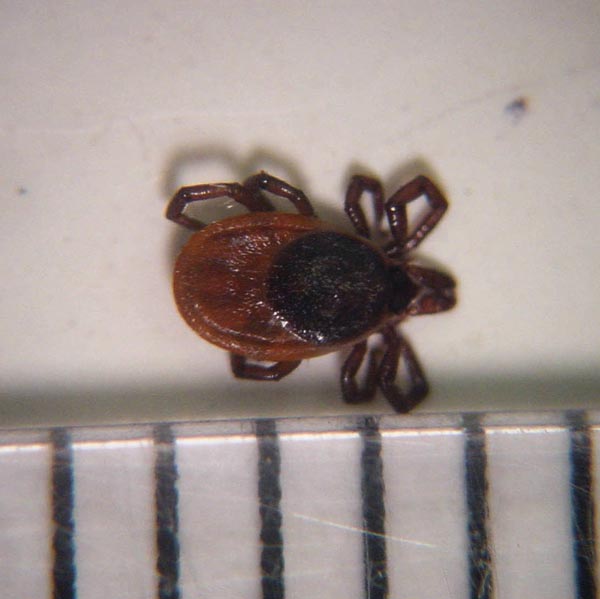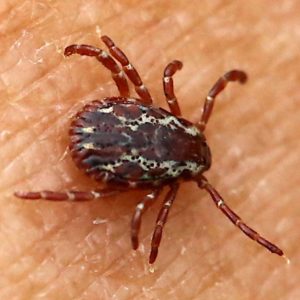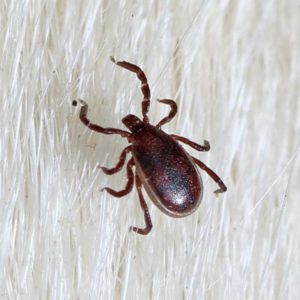Description
| Size | 1/6 to 1/8 in |
| Color | Orange-brown before feeding; reddish-brown after feeding. |
| Body Structure | Flattened body with eight legs. |
| Characteristics | The female deer tick will gorge herself on a host’s blood, often feeding for more than a week, before falling to the ground and laying her eggs in a secluded, protected spot. After laying a mass of more than 1,000 eggs, the female dies. When they hatch, the larva feature six legs only and immediately go in search of hosts for nourishment. (It is during the larval stage of development that deer ticks contract the bacteria that cause Lyme disease). After feeding on a host for 4 days, the larva will fall to the ground and molt. The resultant nymphs have eight legs. Here again, the nymphs go in search of blood and feed until molting again, at which point they emerge as fully-formed adults. |
| Habitat & Behavior | Typically found in the wild residing on the tips of leaves or grass, deer ticks prefer the blood of white-tail deer, hence the name. However, deer ticks also will feed on small mammals, vermin as well as humans and pets. When feeding, the deer tick injects an anti-coagulating agent into its host that allows the tick to feed freely on the victim’s blood. It is at this time that the tick infects the host with bacteria that can cause Lyme disease. It is important to note that ticks do not jump like fleas. Mammalian hosts actually pick up a tick by brushing against grass or plant life upon which a waiting deer tick resides. |
| Commonly Active | Spring / Summer / Fall |
| Prevention & Treatment | If working or playing outside, spray clothing and shoes with an insect repellent containing DEET. Also, wearing long-sleeved, close-fitting clothing in forested areas can help prevent ticks from biting your skin. That said, on human hosts, most ticks are found attached at the nape of the neck, just below the hairline. Because deer ticks are so minute–about the size of a sesame seed, they are difficult to spot. Furthermore, deer tick bites are not accompanied by the redness and discomfort associated with dog ticks; however, the bite still can transmit disease, in particular Lyme disease. If you find a tick on your body, remove it with tweezers as close to its mouthparts as possible. Do not squeeze the body of the tick or touch it with a burned match, as this can cause the tick to regurgitate, pushing dangerous bacteria into the wound. If you are concerned about deer ticks affecting the well being of your family and pets, contact a trusted pest control professional to find out proper treatment options. Learn more about deer tick extermination services now. |



